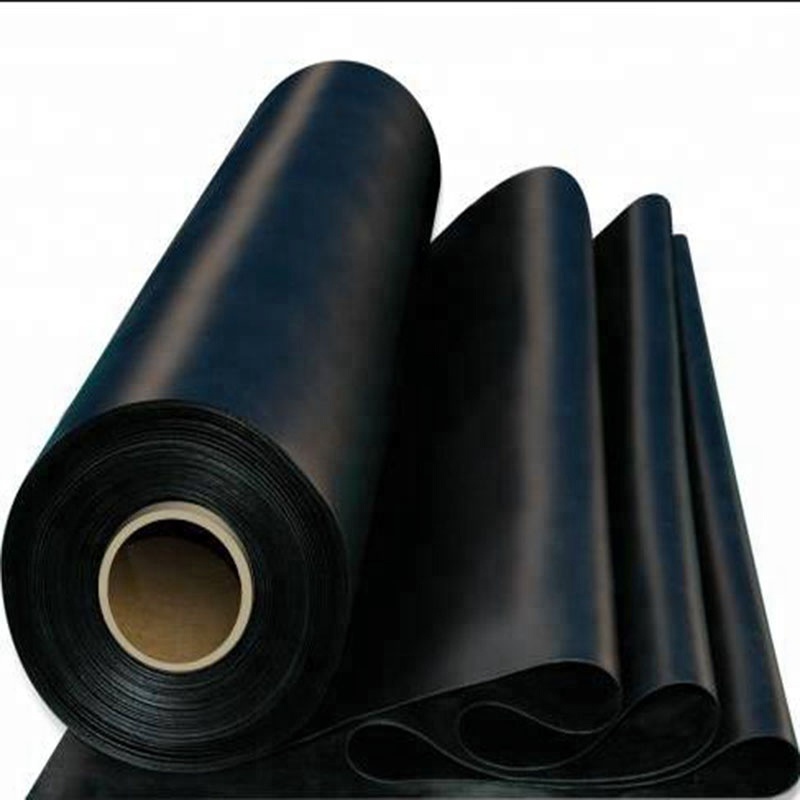Geomembranes are essential components in various engineering projects, offering reliable containment and protection against leaks and contamination. These flexible, impermeable sheets are engineered from a variety of polymers, each possessing unique properties tailored to specific applications. Choosing the right material is crucial for ensuring the long-term success and environmental safety of any project.
One key consideration is the chemical compatibility of the liner with the substances it will contain. Different polymers exhibit varying degrees of resistance to chemicals, acids, alkalis, and solvents. A thorough analysis of the intended application is necessary to select a material that can withstand the chemical challenges and maintain its integrity over time. Factors such as concentration, temperature, and duration of exposure all play a critical role in this assessment.
Mechanical properties are equally important. The liner must be robust enough to withstand installation stresses, including stretching, puncture, and tearing. Furthermore, it needs to maintain its strength and flexibility under varying temperature conditions, preventing cracking or becoming brittle in cold weather or softening in extreme heat. Tensile strength, elongation, and tear resistance are key parameters to evaluate when selecting a geomembrane.
Durability is paramount for long-term performance. Exposure to ultraviolet (UV) radiation from sunlight can degrade certain polymers, leading to premature aging and failure. Manufacturers often incorporate UV stabilizers and antioxidants into the material to enhance its resistance to weathering and extend its service life. The expected lifespan of the project and the environmental conditions at the site should be considered when choosing a liner.
Installation plays a crucial role in the overall performance of the barrier. Proper seaming techniques are essential to create a continuous, leak-free barrier. Welding or adhesive bonding methods are commonly used, and the quality of the seams directly impacts the effectiveness of the liner. Careful attention to surface preparation, proper welding parameters, and thorough testing are necessary to ensure a reliable seal.
Beyond material selection and installation, ongoing maintenance is vital for maximizing the lifespan of the liner. Regular inspections can identify potential issues such as punctures, tears, or seam separations early on, allowing for timely repairs and preventing more significant problems. Proper maintenance ensures the continued effectiveness of the liner and protects the environment from potential contamination.
Selecting the appropriate liner involves careful consideration of numerous factors, including chemical compatibility, mechanical properties, durability, and installation requirements. Consulting with experienced professionals and conducting thorough site assessments are essential steps in ensuring the success of any project requiring a reliable containment solution. By prioritizing quality materials, proper installation, and regular maintenance, one can create a long-lasting and effective barrier that protects both the project and the environment.

 www.singhalglobal.com
www.singhalglobal.com
One key consideration is the chemical compatibility of the liner with the substances it will contain. Different polymers exhibit varying degrees of resistance to chemicals, acids, alkalis, and solvents. A thorough analysis of the intended application is necessary to select a material that can withstand the chemical challenges and maintain its integrity over time. Factors such as concentration, temperature, and duration of exposure all play a critical role in this assessment.
Mechanical properties are equally important. The liner must be robust enough to withstand installation stresses, including stretching, puncture, and tearing. Furthermore, it needs to maintain its strength and flexibility under varying temperature conditions, preventing cracking or becoming brittle in cold weather or softening in extreme heat. Tensile strength, elongation, and tear resistance are key parameters to evaluate when selecting a geomembrane.
Durability is paramount for long-term performance. Exposure to ultraviolet (UV) radiation from sunlight can degrade certain polymers, leading to premature aging and failure. Manufacturers often incorporate UV stabilizers and antioxidants into the material to enhance its resistance to weathering and extend its service life. The expected lifespan of the project and the environmental conditions at the site should be considered when choosing a liner.
Installation plays a crucial role in the overall performance of the barrier. Proper seaming techniques are essential to create a continuous, leak-free barrier. Welding or adhesive bonding methods are commonly used, and the quality of the seams directly impacts the effectiveness of the liner. Careful attention to surface preparation, proper welding parameters, and thorough testing are necessary to ensure a reliable seal.
Beyond material selection and installation, ongoing maintenance is vital for maximizing the lifespan of the liner. Regular inspections can identify potential issues such as punctures, tears, or seam separations early on, allowing for timely repairs and preventing more significant problems. Proper maintenance ensures the continued effectiveness of the liner and protects the environment from potential contamination.
Selecting the appropriate liner involves careful consideration of numerous factors, including chemical compatibility, mechanical properties, durability, and installation requirements. Consulting with experienced professionals and conducting thorough site assessments are essential steps in ensuring the success of any project requiring a reliable containment solution. By prioritizing quality materials, proper installation, and regular maintenance, one can create a long-lasting and effective barrier that protects both the project and the environment.

HDPE Geomembrane Sheets: Top Suppliers & Exporters
Singhal Industries is a top supplier and exporter of HDPE geomembrane sheets, providing high-quality solutions for various industrial and environmental applications.
